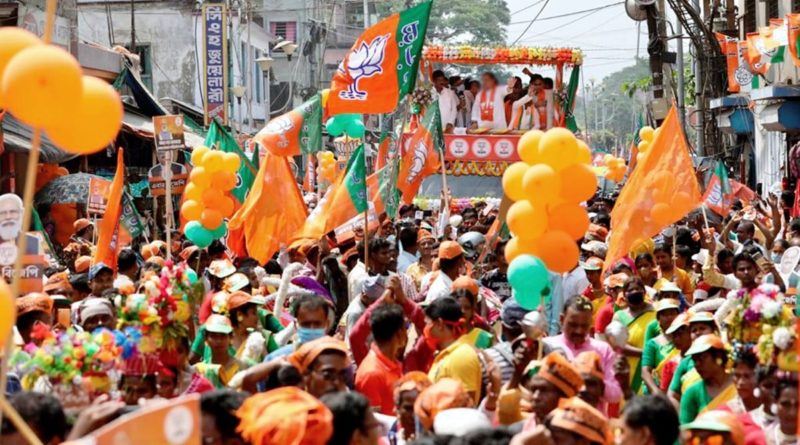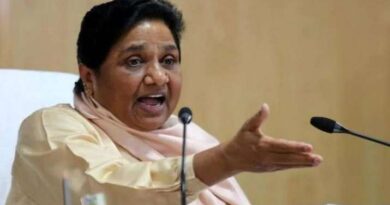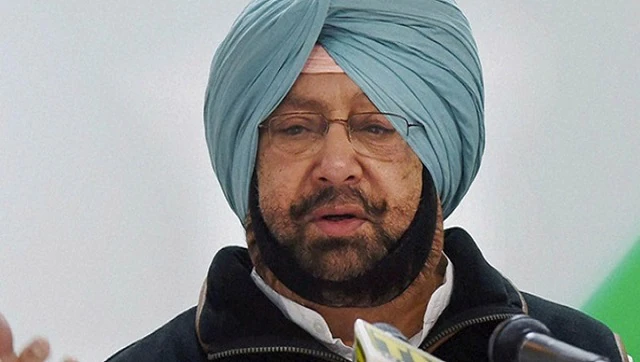RSS Picks Holes in BJP’s Bengal Poll Plan, Advocates Building Strong State Leadership
Indiscriminate inclusion of leaders from the Trinamool Congress and the failure to project a leader to match and counter Mamata Banerjee’s popularity are among the reasons behind the Bharatiya Janata Party’s unexpectedly poor performance in West Bengal. Or so feels the party’s ideological mentor, the Rashtriya Swayamsevak Sangh (RSS).
In two back-to-back articles dated May 12 and 13, RSS’s mouthpiece Organiser dissected the BJP’s performance in Bengal and came up with the above-mentioned reasons for the party remaining limited to just 77 seats instead of getting anywhere close to the 200-plus target that was repeatedly and publicly projected by its top leaders during poll campaigns. Both articles, of course, added more factors that may have led to the party’s drubbing in the elections. The results for the tumultuous eight-phase polls announced on May 2 saw the incumbent TMC emerge victorious with a massive 213 of the 292 seats available.
Titled ‘Bad Experiments in Bengal’, an article published in the RSS mouthpiece on May 13 also lists the adverse impact of Covid-19 in the last two phases of polls in the state, besides non-judiciously recruiting leaders from political opponents, as a possible reason for the party’s performance.
“The beneficiaries created by TMC through different schemes, some of BJP’s wrong steps like welcoming TMC leaders without judging their strength and impact of Covid-19 on last two phases resulted in such decimated performance,” the article states. It also points out that a 2 per cent drop in BJP’s vote share (2.5 per cent according to Election Commission figures) compared to the party’s 2019 performance and a 5 per cent swing of Left and Congress votes to the TMC from the 2019 Lok Sabha polls to the 2021 assembly elections cost the BJP dearly in Bengal.
- But a more detailed piece published a day earlier, on May 12, in the same mouthpiece, also suggests a course which the BJP should chart in Bengal in the years ahead. Titled ‘Bengal Election Saga: A Lot to Learn and Unlearn’, it spells out Mamata Banerjee’s unmatched political popularity as one of the primary factors that led to the BJP’s defeat.
The article states: “Mamata Banerjee at the State level was far superior in stature than any other BJP State leader. This was repeated again and again in various opinion polls across the State. Though the popularity of BJP along with its vote share was continuously rising but it never for once dented the popularity of Mamata Banerjee among the voters. Even people in the BJP cadre though were against TMC at the local level, had high regards for Banerjee as a politician. This was also the general sentiment across the State. Though many disliked TMC and its goons, the culture of cut money etc. but none of it affected the image or the popularity of Mamata Banerjee. The general consensus was on the bad reputation of TMC cadre but a good leader in the form of Mamata Banerjee. BJP on the other hand struggled a lot to pitch a credible Chief Minister face in the elections. Also, the State leadership was nowhere in comparison to Mamata Banerjee. Bengal in the end chose its Chief Minister over the BJP state leadership in the elections.”
Amid other factors the article lists for the party’s unexpected performance, it prominently highlights the failure of the BJP leadership to “resonate with Bengali identity”.
“Dilip Ghosh was popular among the Hindu rural segment because of his unabashed nature but his words had minimal impact among the urban segment of the population. Also, the two tall leaders Narendra Modi and Amit Shah though very popular among the masses but being of non-Bengali origin couldn’t convert their popularity into votes in the State elections. This can be further highlighted by the road show and rally turnouts of BJP President JP Nadda who had very limited popularity among the masses,” the article states.
Interestingly, however, the article refers to Sun Tzu, a military strategist from ancient China, to chart the way forward for BJP in Bengal. “Building a strong formidable State leadership with a main State leader who can be projected as a State leader in front of Mamata Banerjee is the most important step going forward,” it says. “There needs to be a trust-based relationship between the Center and State leadership with a free hand given to the State leadership to execute its plan. Center’s involvement should be for monitoring and preliminary discussions and initial decisions only.”
Responding to the analyses, president of BJP’s Bengal unit Dilip Ghosh did not disagree with most of the points. Stating that the party is yet to sit for its official analysis of the poll results and that most party leaders were currently busy tackling post-poll violence in the state, Ghosh said, “The fact we did not have a projected leader against Mamata Banerjee, whose popularity we never doubted, was certainly a disadvantage. But we are not yet sure how much of that actually impacted our votes.”
“There have been protests and disagreements within our party over defection of leaders from Trinamool. Their anti-incumbency votes may have affected us. But we will have to do a detailed analysis of that,” he added, while asserting that the 38 per cent vote share of the BJP in Bengal is the baseline from where it would be making gains in future.
Read all the Latest News, Breaking News and Coronavirus News here



